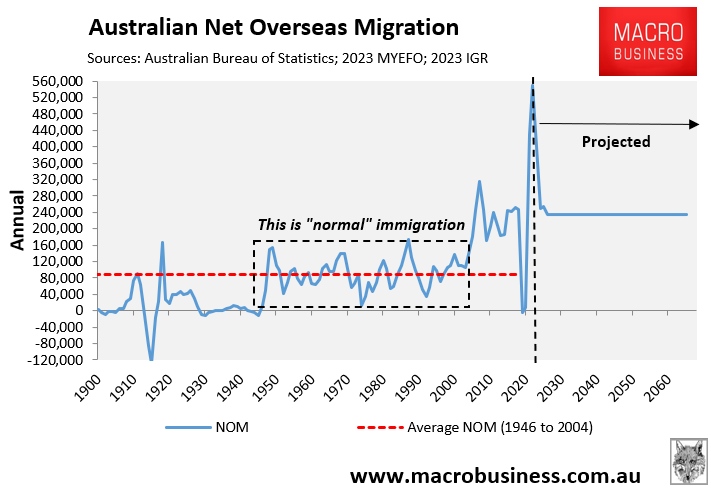The Housing Industry Association (HIA) has released new home sales data for April, which tanked by 12.6% over the month:
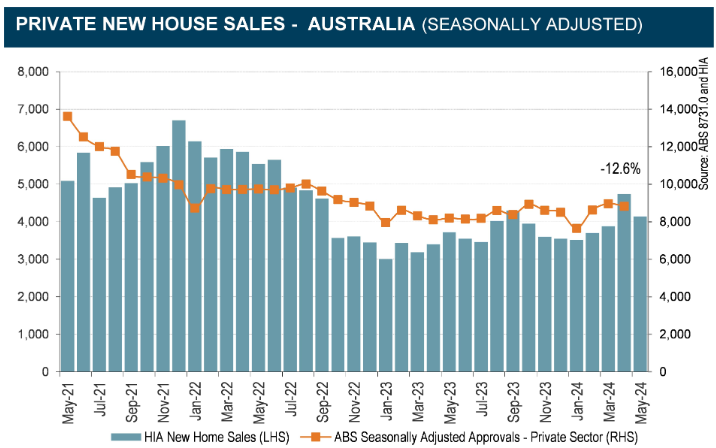
The slump in sales followed the surge in demand in March as buyers rushed to beat cost increases from the implementation of the National Construction Code in Victoria and Queensland.
“The changes to the NCC 2022 came into effect in Victoria and Queensland for any new home building contract signed from 1 May 2024”, HIA chief economist Tim Reardon said.
“These two states have seen a decline in sales in the month of May as a result of the pull-forward in April to get ahead of the cost increases due to NCC 2022″.
“This was a repeat of the experience of New South Wales in September when it introduced its energy efficiency standards. Sales in the months thereafter fell as a result of this pull-forward”, Readon added.
The trend in new home sales is better, as illustrated by the following chart from Justin Fabo at Antipodean Macro:
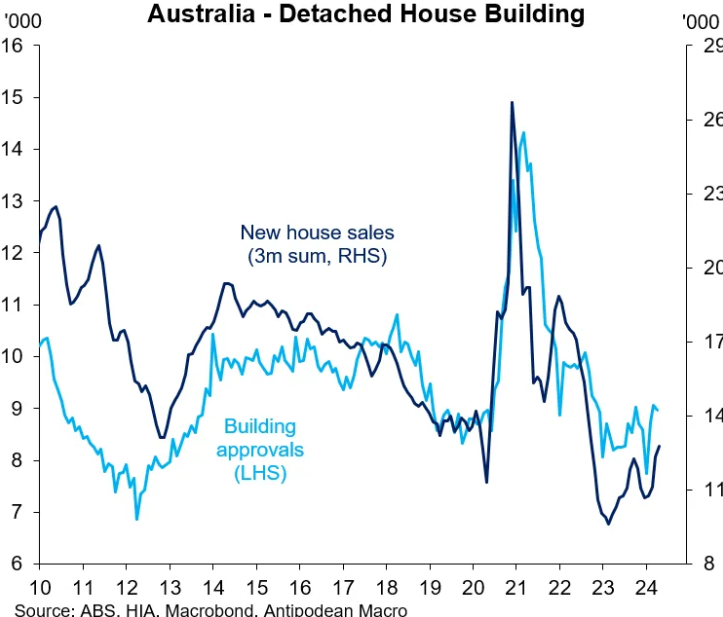
Nevertheless, buyer demand remains at a historically low level, as does dwelling approvals, which are running at an annualised rate of around 150,000:
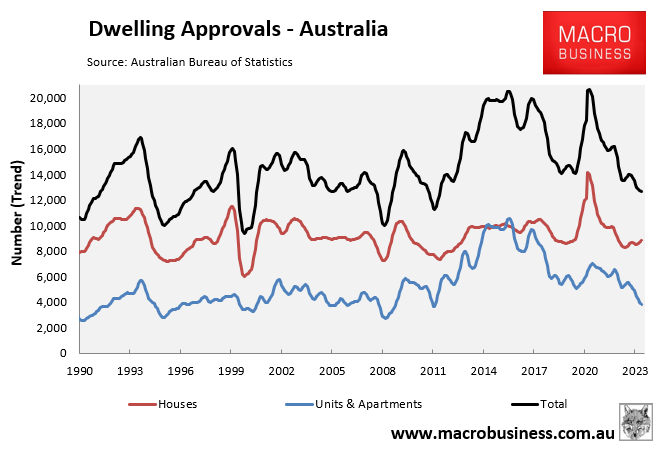
Neither data set suggests that Australia has any hope of meeting the Albanese government’s target of building 240,000 homes a year – a feat that Australia has never managed before:
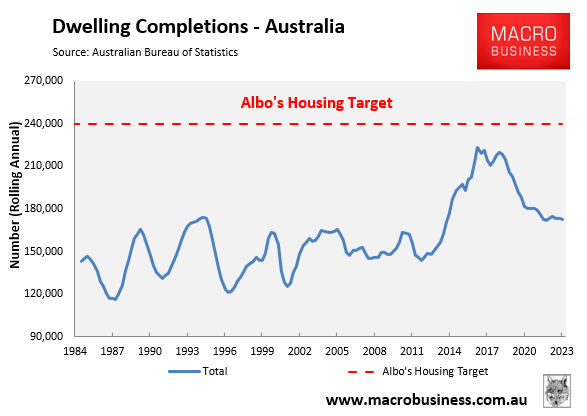
Indeed, Tim Reardon suggests that the increased regulatory requirements will impede housing supply:
“The increase in the cost of construction driven by increased regulatory requirements, and higher interest rates, will further impede the goal of increasing the supply of housing and place more pressure on public housing requirements”.
“If governments want to increase the supply of homes, they need to, at the very least, stop making new homes more expensive”.
In reality, Australian home builders are facing a perfect storm of factors preventing higher construction rates. These include:
- High interest rates;
- High materials costs;
- Low buyer demand;
- Widespread builder insolvencies;
- Competition for labour from state government infrastructure projects; and
- Soaring building insurance costs.
Australia’s governments should recognise that the nation will never meet its housing targets and instead cut immigration to a level that is commensurate with the nation’s capacity to build homes and infrastructure.
